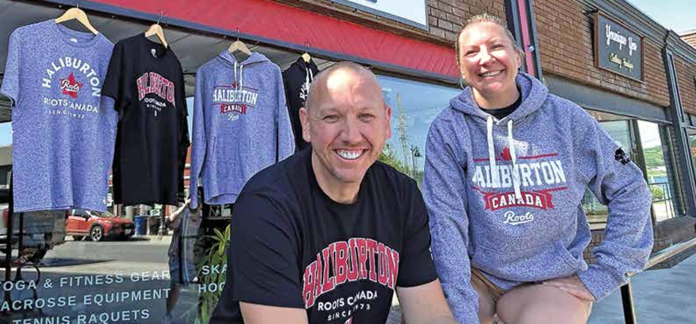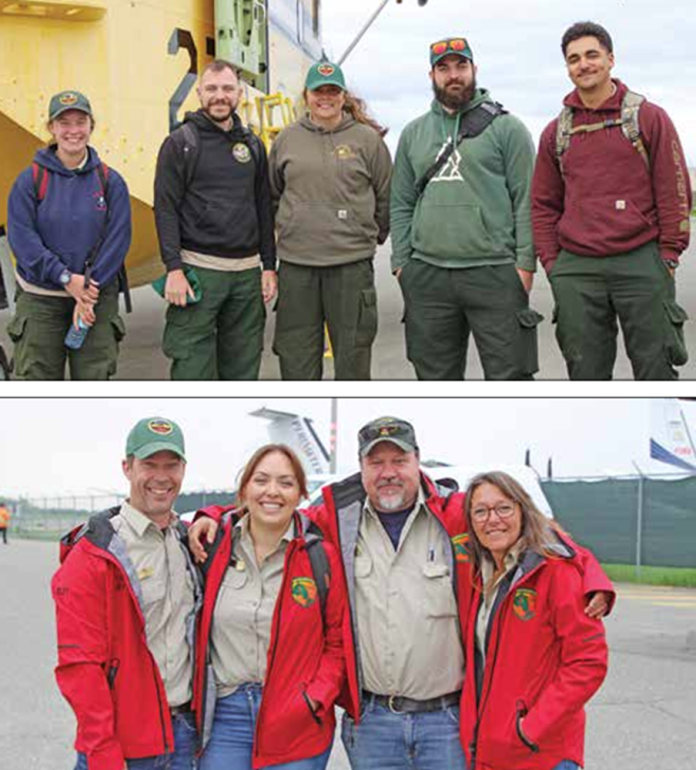Helen Parker returned to her Hwy. 118 home June 17 to find a sign by her driveway warning that pesticides had been sprayed by Fowler Construction.
When she got out of the truck, she said she could smell and taste the chemical.
“Under the back of my tongue, I could feel a sensation. It is deeply offensive to me that, without notice, without scientific justification, without due diligence, a toxic pesticide was sprayed in the vicinity of my home and sensitive waterways,” she said.
Parker said the back of the sign gave no indication of why the spraying had been done, or what had been sprayed.
When she called Fowler’s 1-800 number on the sign, she claimed she was told they used Roundup – sprayed for phragmites, and ordered by the Ministry of Transportation (MTO).
Parker said they have a pond on their property and there are wetlands next to the highway. She added a large culvert allows water to flow to a tributary that feeds into local lakes. She added their home has been identified as a significant painted turtle and snapping turtle breeding area.
“A two-kilometre stretch both east and west of our home sees a waterway in most parts of the ditch on both sides of the highway. I have seen many dead turtles due to traffic hits. The last thing these turtles need in peak breeding season is Roundup,” Parker said.
She claimed there are “zero significant phragmites” in the waterway on their property, but said there are phragmites towards Carnarvon, some 10kms away.
A spokesperson for the MTO told The Highlander June 24 the ministry “has an established program to control invasive species along provincial highways to limit the spread of phragmites through a combination of herbicide application and plant cutting when conditions permit.” She added that when working in areas where invasive phragmites are present, their contractors must implement several environmental protection measures as detailed in the 2025 Environmental Guide for Managing Invasive Phragmites.
She said ministry staff confirmed the contractor complied with regulations. “Spraying was completed within the ministry highway right-of-way to control vegetation growth and improve sightlines to ensure the safety of all road users. No spraying occurred within 15 metres of a waterway.”
However, she added, “the contractor has been reminded that all signs must be properly filled out. Ministry staff will be monitoring for compliance.”
Connor Frazer, an environmental compliance officer for the Ministry of Environment, Conservation and Parks in Peterborough, said on June 24, the ministry had not received public complaints about the spraying, or Fowler Construction.
“Although we cannot speak to the requirements and work ordered by the Ministry of Transportation, we can confirm the contractor has a valid Pesticide Operator Licence and licensed exterminators on staff to conduct roadside spraying. There are legislative exemptions for notification requirements when spraying roadside ditches for road maintenance. Ministry staff will follow up with Fowler Construction to discuss product(s) used and their application practises,” he said.
But Parker remains adamant pesticides should not have been sprayed.
“It’s sad that the first go-to is to spray poison near wetlands before asking is this necessary?
“My photos of dead vegetation show they did, in fact, spray within 15 metres of a wetland. For years, people thought asbestos was a terrific building product – now we know otherwise. Roundup is toxic – that’s why they erected the signs.”
Carolyn Langdon of Haliburton County Master Gardeners said it seems early in the year to be applying herbicide. “It is done before the grasses set seed. I hope it wasn’t a windy day or a hot day as this affects the uptake of the herbicide.
“Herbicide application in sensitive habitats should be restricted to late summer through to early fall. This timing coincides with senescence of most native plants and reduced activity of native wildlife and species-at-risk and allows for the herbicide to be translocated into the root system.”
She added, “HCMG agree that spraying in wetland areas needs to be assessed and done with great care. Applying herbicide in these habitats should be the last option of treatment. Plants can become resistant to herbicides so if herbicides are to be used, it is important that it is done properly.”











